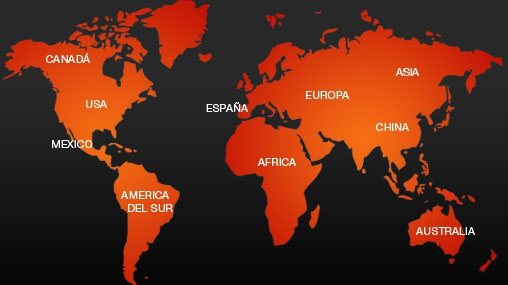- Inicio Acerca de RM Minerales
- Galería de fotos Blog RM Contacto
- Microscopia e instrumentos Pedidos Aviso legal
Copyright 2010-2025
www.rosellminerals.com



Estos ejemplares fueron extraídos en la Loma de Hamapega, una pequeña sierra entre las poblaciones de Alanís y Guadalcanal. Se analizaron diversos minerales entre los que destacamos la conicalcita, de color verde, la azurita y unos agregados terrosos que resultaron ser chenevixita. Enviaremos al comprador los diversos análisis. Un ejemplar para coleccionistas locales.
Muy interesante combinación formada por un nódulo de tinticita con algún pequeño agregado de calcioferrita. La calcioferrita muestra agregados globulares de color verde oliva, con cristales radiados, incluidos en matriz de tinticita. Estos especímenes han sido analizados por SEM-EDS y XRD y enviaremos todos los detalles al comprador. De esta clásica mina catalana.
Muy interesante combinación formada por un nódulo de tinticita con algún pequeño agregado de calcioferrita. La calcioferrita muestra agregados globulares de color verde oliva, con cristales radiados, incluidos en matriz de tinticita. Estos especímenes han sido analizados por SEM-EDS y XRD y enviaremos todos los detalles al comprador. De esta clásica mina catalana.
Este es uno de los raros boratos determinados en Kohnstein quarry. Los cristales, perfilados y definidos, son completamente transparentes, incoloros, de gran tamaño para la especie y en matriz. Procede de una explotación minera actualmente inactiva en las montañas del Harz.
Muy rico ejemplar formado por numerosos cristales de hidroboracita, con el prisma muy alargado y definidos. Totalmente incoloros, transparentes y con un brillo extraordinario. Una pieza de la mejor calidad para la especie. Procede de una explotación minera actualmente inactiva en las montañas del Harz.
Ejemplar rico en minerales de cobalto sobre el que destacan diversos cristales de proustita. Muy facetados y con transparencia, lo que nos permite ver el color rojo de esta sulfosal de plata. una fotografía de este ejemplar, de Volker Betz, fue imagen del día en mindat (Photo of the Day - 7th Oct 2012). Una pieza muy destacable para esta mina alemana.
La hilarionita es un hidroxiarseniatosulfato de hierro hidratado muy raro, exclusivo de esta mina en el famoso y antiguo distrito de Lavrion. Esta especie fue aprobada a finales de 2011. En este ejemplar de buen tamaño, la hilarionita se presenta como agregados botroidales formados por pequeños cristales, con un tono amarillo verdoso más intenso en algunas zonas. El ejemplar fue adquirido por Erich Laskowsky a Anastasios Tsinidis, un conocido "strahler" (buscador de cuarzos) de origen griego. Una pieza de la localidad tipo para la especie.
Este es un clásico ejemplar de cinabrio fisural, en el que podemos observar bajo aumento pequeños cristales de cinabrio aplanados, con caras estriadas, sobre una drusa de cristales de cuarzo. La transparencia hace que sea muy brillante bajo la luz.
Como suele suceder en las etiquetas antiguas las localidades a veces son discrepantes con los datos que actualmente tenemos a disposición en internet. Este histórico ejemplar de ilmenita, procedente de la colección Astor y adquirido en 1976 a Joan Montal (antiguo vendedor de minerales de Vilafranca del Penedés), nos aporta una etiqueta en la que se indica la localidad de Saint-Urbain. Al tiempo de documentar esta pieza, hemos encontrado la imagen de una ilmenita procedente de Havre-Saint-Pierre (una zona más al noreste de Saint-Urbain) con un parecido y minerales acompañantes muy similar y, lo más destacable, se indica que fue recogido in situ durante una visita en 1979 (ver), cuando nuestro ejemplar data de 1976. Además, ambos ejemplares están formados por agregados de cristales de ilmenita con unos pocos cristales de pirita.
En este ejemplar podemos ver un grupo de cristales de fluorita azulada parcialmente recubiertos por una drusa de cristales de cuarzo diminutos pero muy brillantes.
Muy estético ejemplar de celestina procedente de Marruecos. Nos muestra un nutrido grupo de cristales prismáticos de este sulfato de estroncio, muy definidos y facetados, y con una transparencia excelente que nos permite ver un muy suave color azulado. Se dispone sobre una matriz compacta. Esta localidad se encuentra al noreste de Imilchil.
Grupo de agregados globulares de girolita, con muy buen tamaño, blancos y translúcidos. Se acompañan en la vacuola con finos cristales aciculares de okenita. Las fotografías no hacen justicia a la pieza. Muy estética.
Muy nutrido grupo de cristales de harmotoma que rellenan una vacuola en la roca volcánica. Presentan numerosas facetas, con brillo y son entre transparentes coma los más pequeños, y translúcidos los de mayor tamaño. Idar-Oberstein es conocida como una ciudad de piedras preciosas con tradicionales talleres que trabajan ágata, jaspe, cuarzo, etc. Un ejemplar de muy buena calidad para esta localidad, difícil de encontrar hoy en día.
Ejemplar de muy buen tamaño de fluorita de esta clásica mina catalana. Sobre la antigua matriz de granodiorita anaranjada se disponen diversos grupos de cristales, alguno de ellos aislados, con formas octaédricas. Presentan un brillo semi mate y un color verde uniforme. Muy fluorescente bajo la luz UV-OC. Los ejemplares de fluorita de esta cantera son muy apreciados por los coleccionistas.
En este ejemplar podemos observar un numeroso grupo de cristales prismáticos, aciculares, brillantes, con un color violeta a lavanda oscuro. La descriptiva original de esta pieza refería a un mineral del supergrupo de los anfíboles llamado "crossita". Esta especie, en la actualidad desacreditada, es realmente un intermedio entre la riebeckita y la glaucofana. Los ejemplares de esta localidad austríaca son muy característicos.
Los ejemplares de epidota de esta zona del Mont-Blanc no son nada habituales. Este ejemplar fue adquirido por Joan Astor en Chamonix. Se trata de un cristal idiomórfico, de buen tamaño y que presenta las caras bien definidas a excepción de una en la parte superior fracturada. También podemos observar fisuras de crecimiento. Este ejemplar tiene su historia ya que fue adquirido a Francesc Garcia, uno de los referentes del montañismo catalán.
En este ejemplar podemos observar un grupo de cristales de celestina con el prisma muy desarrollado y caras terminales pequeñas, pero bien definidas. Son transparentes lo cual nos permite observar una marcada zonación de color con tonos melados en la parte media inferior e incoloros en la parte superior. Se disponen sobre una matriz con azufre. Este ejemplar procede de la colección Joan Astor y enviaremos la etiqueta manuscrita al comprador.
Para completar la información tomaremos parte del artículo Gradowski et al. (1992): "Los depósitos de azufre superficiales en el área de Tarnobrzeg (Polonia) se formaron después de la deposición sobre una caliza de diferentes niveles de yeso y anhidrita. El azufre se depositó en forma pulverulenta principalmente, pero también como masas cristalinas y cristales definidos. Otros minerales presentes en estos niveles de azufre son: calcita, y eso coma cuarzo, óxido de aluminio, celestina y barita".
Gradowski, J. and Kubiak, W.W. (1992) The Machow Mine, Tarnobrzeg, Poland. The Mineralogical Record: 23(1): 29-32.
Muy estética miniatura formada por un grupo de cristales de cuarzo recubiertos por cristales cúbicos biselados de pirita sobre los cuales destacan diversos cristales tabulares de hübnerita, bien definidos y con una transparencia roja muy visible. Ejemplar procedente de la colección Joan Astor, adquirido en 1982 a Bailey Minerals (Ángel Jesús Talabán García, Segovia 1942-Madrid 2007).
Drusa de cristales con caras del cubo y el rombododecaedro de pirita, caras estriadas, compleja cristalografía, lo que añade interés al ejemplar. La parte posterior es curiosamente plana. El brillo es excepcional, difícil de fotografiar. Los cristales estan interpenetrados. Un clásico de la mina de donde se obtienen las bases para el "Balón de Oro" de la FIFA...
Estos ejemplares están formados por numerosos cristales de aspecto prismático dealbita, muy definidos e interpenetrados. Se acompañan de cristales aciculares de actinolita y epidota, con cristales octaédricos de magnetita. Una pieza de buen tamaño y calidad. Se vendieron como ortoclasa pero un reciente análisis XRD que he hecho indica que se trata de albita (15/2/2024). Quizás más interesante.
Estos ejemplares están formados por numerosos cristales de aspecto prismático de albita, muy definidos e interpenetrados. Se acompañan de cristales aciculares de actinolita y epidota, con cristales octaédricos de magnetita. Una pieza de buen tamaño y calidad. Se vendieron como ortoclasa pero un reciente análisis que he hecho indica que se trata de albita (15/2/2024)
Las minas de fluorita del Matagalls se hallan en el macizo del Montseny. Son bien conocidas por la fluorita, pero también por los cristales de cuarzo de la variedad amatista como los que mostramos en este ejemplar. Sobre una matriz tapizada por cristales de fluorita de tono verde amarillento se disponen numerosos cristales de amatista, parcialmente recubiertos por pequeños cristales de calcita muy brillantes.
Los ejemplares de barita de esta clásica mina catalana son poco habituales en el mercado. En esta pieza podemos observar un nutrido grupo de cristales interpenetrados, destacando algunos de ellos con las caras bien visibles. Presentan un color ligeramente amarillento y son traslúcidos. Este ejemplar procede de la colección Joan Astor.
Cristal prismático de elbaíta, de intenso color verde, que nos muestra en la cara plana superior del pinacoide un color verde más claro cuando la luz lo atraviesa. Se acompaña de cristales de clevelandita. Procede de la colección Trigo.
Ejemplar de elbaíta de muy buen tamaño y grosor, que nos muestra los prismas con estriaciones verticales y las caras terminales bien definidas. Destaca el brillo y un color verde más intenso en la parte superior y más claro en la base. Una pequeña joya de Minas Gerais. Procede de la colección Trigo de Mataró.
